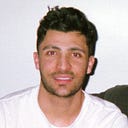The Exclusive Jaqua Center and the Perpetuation of Classism at the University of Oregon
The University of Oregon has long been known for its robust athletic program, bolstered by substantial financial support from donors, sponsorships, and partnerships, most notably with Nike. This financial backing has resulted in the construction of state-of-the-art athletic facilities, exclusive academic centers, and premium gear for student-athletes. While these investments have significantly benefited the university’s athletic department, they have also contributed to a disparity in resources between student-athletes and the broader student body. This essay explores the cause-and-effect relationship between the funding gap in athletics and other academic areas, and its psychological and social impact on non-athlete students at the University of Oregon.
The Cause: Unequal Funding in Athletics and Academics
The financial support for the University of Oregon’s athletic programs is substantial. According to the university’s financial records, the athletic department reported revenue exceeding $120 million in 2015, with a significant portion coming from Nike, alumni donations, and television contracts. In contrast, many academic departments rely primarily on state funding and tuition revenue, leading to disparities in available resources.
One of the most prominent examples of this funding gap is the John E. Jaqua Center for Student Athletes, a 40,000-square-foot academic facility exclusively for student-athletes. The center includes amenities such as an auditorium, computer labs, private tutoring rooms, and study lounges, while many academic buildings on campus have limited study spaces and outdated technology. The university’s prioritization of athletic facilities over general academic infrastructure has raised concerns among non-athlete students regarding resource allocation.
The Effect: Psychological and Social Impact on Non-Athlete Students
The presence of an exclusive, high-end facility for student-athletes can create a perception of hierarchy on campus. Non-athlete students may feel alienated or undervalued when they see that athletes have access to superior academic resources. The term “Jock Box,” commonly used by students to describe the Jaqua Center, reflects the perception that athletes are placed on a pedestal, separate from the general student body.
Studies in social psychology suggest that visible disparities in privilege within a shared environment can lead to feelings of exclusion and decreased motivation. Research from Princeton University (2014) indicates that students who perceive institutional favoritism toward certain groups may experience reduced academic engagement and a diminished sense of belonging. Similarly, at the University of Oregon, some students report feeling a lack of connection to the campus community when they compare their academic resources to those available to student-athletes.
Additionally, student-athletes often receive gear and apparel that further distinguishes them from non-athlete students. Branded items, such as Nike backpacks and team apparel, serve as status symbols that reinforce the divide. While these perks are intended to support athletes, they may inadvertently contribute to a social barrier between athletes and the rest of the student body.
Broader Implications and Potential Solutions
The exclusivity of athletic resources at the University of Oregon is reflective of a broader trend in collegiate athletics nationwide, where universities prioritize revenue-generating sports programs. While the financial success of athletic departments benefits the university in terms of national recognition and funding, it also raises questions about the equitable distribution of resources.
One potential solution is increased investment in general academic and student facilities. Some universities have adopted models where academic centers funded by athletic revenues are made accessible to all students, fostering a more inclusive environment. For example, the University of Michigan’s Ross Academic Center, while designed for student-athletes, offers some services to non-athlete students as well.
In conclusion, the disparity in funding between athletics and academics at the University of Oregon has both tangible and psychological effects on the student body. While student-athletes benefit from state-of-the-art facilities and exclusive resources, non-athlete students may feel a sense of exclusion that affects their overall university experience. Addressing these concerns through more inclusive policies and investment in general academic infrastructure could help bridge the gap and foster a more cohesive university community.
